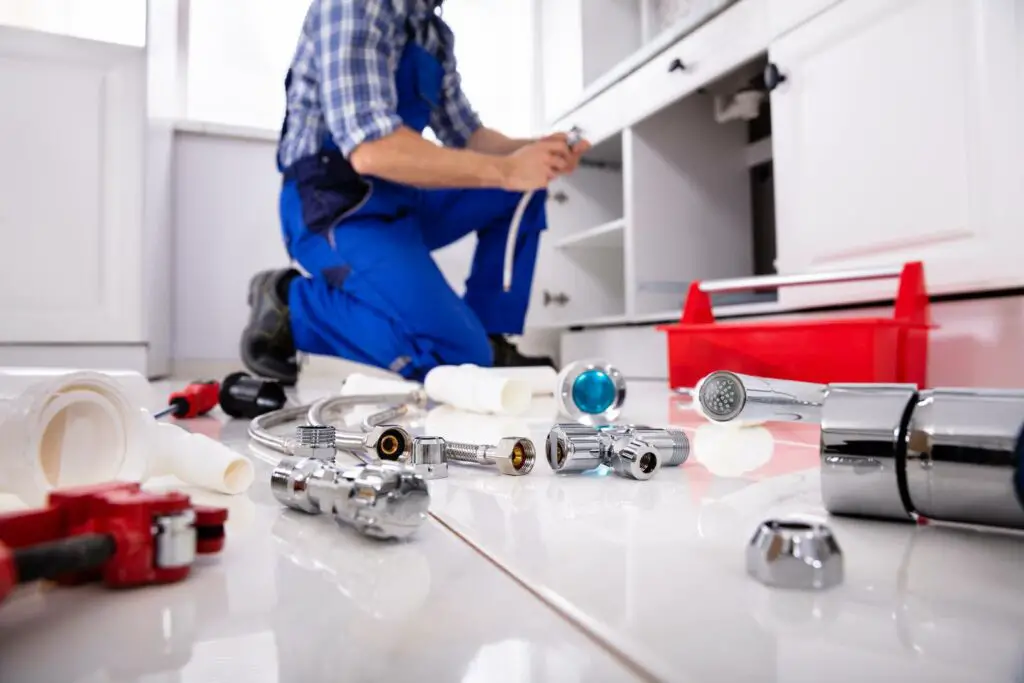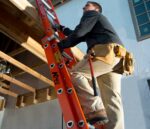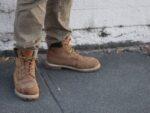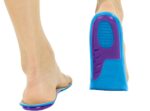Let’s face it, life would be incredibly difficult without plumbers. These professionals are among the unsung heroes that keep homes and businesses up and running. Imagine life without a bathroom!
Considering what plumbers face daily in the course of their work, it becomes fundamental that they have the appropriate work gear for protection and comfort. Fundamental for their PPE is a pair of good reliable work boots.
Work boots are a priority because plumbers work with water systems, fixtures, and appliances that use water. This translates into slippery surfaces and dirty wet locations.

They may need to use heavy tools as well, so stability is imperative. If we add comfort, durability, and waterproofing to the equation, this means that just any pair of work boots won’t do.
We went to the source, an amiable group of professional plumbers, a few that work for specific institutions like hospitals, and others that work independently. They tested work boots for us in the worst imaginable conditions.
Our pros selected Wolverine Cabor Six-inch Men’s Work Boot as the best overall work boots for plumbers. These boots feature several important safety features like the composite safety toe cap, electric hazard protection, and waterproofing. Nonetheless, they are exceptionally comfortable.
So, if you are a professional plumber, or even do part-time plumbing jobs, consider these selections for the best work boots for plumbers.
| Work Boot | Uppers | Outsoles | Safety | Waterproof | Insulation |
|---|---|---|---|---|---|
| Wolverine Cabor Six-inch | 100% leather | Synthetic | ASTM F2413-18 M I/75 C/75, EH rated, Composite toe cap | Yes | No |
| Irish Setter Six-inch #83605 | 100% full-grain leather | Rubber-EVA tread outsoles | ASTM F2413 and F2892-11, EH protection | Yes | No |
| Carhartt CMF6371 | 100% full-grain, oil-tanned leather | Rubber with unique lug design | Composite toe cap, ASTM, F2413-18, F2413-11, EH protection | Water-resistant | No |
| Timberland Six-inch Direct Attach PRO | 100% leather | Rubber | Steel toe cap, ASTM F2412 and ASTM F2413, EH protection | Yes | Thermolite insulation |
The Reviews
Best Overall Work Boot for Plumbers
1.) Wolverine Cabor Six-inch Men’s Work Boot
- composite
- electrical-hazard
- 100% Leather
- Dual Density EPX Anti Fatigue Footbed
Prices pulled from the Amazon Product Advertising API on:
Product prices and availability are accurate as of the date/time indicated and are subject to change. Any price and availability information displayed on [relevant Amazon Site(s), as applicable] at the time of purchase will apply to the purchase of this product.
This is an ideal work boot for professional plumbers. Boot uppers are manufactured in 100% leather attached to a synthetic outsole. The footbed is a dual-density EPX antifatigue design.
A composite safety toe offers impact protection. They also come with ASTM electrical hazard ratings F2413-11 M I/75 C/75. They are particularly comfortable on hard surfaces.
Sizing is offered in standard, wide, and extra-wide from 7 through 14 and there are three color options (Coffee, dark brown, or black) to choose from.
The heel design is optimal if you have to do any climbing to get to a repair. Slip-resistant and lightweight, this pair of work boots is exceptionally comfortable.
Pros
-
-
- Waterproof
- ASTM F2413-18 M I/75 C/75
- Antifatigue insole
- Outsole has shock-absorbing padding and rubber lugs
- EH certified
- Composite safety toe
- Slip-resistant
-
Cons
-
-
- Require some breaking in
- Some quality control issues
- Boot’s tongue doesn’t always lay flat
-
Best Soft Toe Work Boot for Plumbers
2.) Irish Setter Six-inch #83605 Men’s Work Boot
- 6 lace-up work boot with USA-made full grain leather married to a rubber-EVA outsole thats heat-resistant for protection in high heat environments
- Electrical Hazard - meets ASTM F2413-11 Safety Standards,Outsole:Rubber-EVA Traction Tred. Care - To ensure your rubber footwear stays in good condition wipe or spray with lukewarm water after use and allow to dry naturally.
- Heat-Resistant outsole - resistant to melting at a minimum of 475 Fahrenheit
- Lining (Vamp):Non-Woven Nylon
Prices pulled from the Amazon Product Advertising API on:
Product prices and availability are accurate as of the date/time indicated and are subject to change. Any price and availability information displayed on [relevant Amazon Site(s), as applicable] at the time of purchase will apply to the purchase of this product.
The first thing that you notice is how slip-resistant these work boots are. This makes them particularly attractive as work boots for plumbers.
The unique wedge sole adds to the stability when moving around on slippery surfaces. Thick white rubber EVA outsoles also come with noteworthy tread increasing traction capability.
Boot uppers are produced in full-grain leather that is waterproofed offering both breathability and durability despite exposure to water. A handsome lace-up design and padded collar give these boots a nice professional appearance.
ASTM F2413 safety requirements and ASTM F2892-11 electrical hazard protection. The outsole is also heat-resistant. Available in regular and wide sizes from 7 through 14 and in an aluminum safety toe version #83606.
Pros
-
-
- Boot uppers in 100% full-grain leather
- Padded boot collar
- Construction features triple stitching
- Rubber-EVA tread outsole is heat resistant
- Goodyear welt construction
- EVA midsole
- Removable footbed with cushioning
- EH protection
- Lace-up boot design
-
Cons
-
-
- Sizing runs large
-
Best Safety Toe Work Boot for Plumbers
3.) Carhartt CMF6371 Men’s Safety Work Boot
- Composite Safety Toe. Identifies protection against impact and compression hazards with a composite (non-metallic) safety toe.
- Electrical Hazard (Safety Toe). Identifies secondary protection against incidental contact with electrical circuits of 18,000 volts or less under dry conditions.
- Oil tanned leather upper
Prices pulled from the Amazon Product Advertising API on:
Product prices and availability are accurate as of the date/time indicated and are subject to change. Any price and availability information displayed on [relevant Amazon Site(s), as applicable] at the time of purchase will apply to the purchase of this product.
Industry powerhouse Carhartt boasts over a century of work gear production and has a sterling reputation for producing rugged and durable PPE. These composite toe work boots feature lightweight cement construction with oil-tanned 100% full-grain leather uppers in a lace-up style.
A moisture-wicking lining called “FastDry” keeps feet dry and odor-free. Both the heels and toes are composite reinforced and bumpers in rubber that are abrasion-resistant.
A polyurethane insole is cushioned and placed over an EVA midsole that is lightweight and an outsole in heavy-duty rubber with an original lug design to prevent slipping. Resistant to slippage, oil, and chemicals, this is a solid choice in work boots for plumbers.
Sizing is available in both medium and wide from 8 to 15. These work boots are water-resistant and meet ASTM F2413-18 certification safety standards as well as ASTM F2413-11 safety requirements for electrical hazard protection.
Pros
-
-
- ASTM safety standard compliant
- EH protection
- Water-resistant 100% full-grain leather uppers
- Rubber outsoles with unique lug design
- Composite safety toe
- Rubber bumpers
- EVA midsole
- Moisture-wicking lining
-
Cons
-
-
- Insoles could be thicker or more cushioned
- Only water-resistant, not fully waterproof
-
Best Insulated Work Boot for Plumbers
4.) Timberland Six-inch Direct Attach PRO Work Boot
- These durable waterproof boots feature 200 grams of insulation for warmth, steel toes & is seam-sealed waterproof to keep your feet dry.
- ANTI-FATIGUE TECHNOLOGY: A comfort system designed with shock-absorbing, geometrical technology that returns energy back to the foot to deliver all-day support and comfort.
- Rubber Outsole that is Heat, Slip, Oil and Abrasion Resistant.
Prices pulled from the Amazon Product Advertising API on:
Product prices and availability are accurate as of the date/time indicated and are subject to change. Any price and availability information displayed on [relevant Amazon Site(s), as applicable] at the time of purchase will apply to the purchase of this product.
The highly attractive Timberland Six-inch PRO Work Boot boasts Thermolite insulation for warm feet even in the coldest of temperatures. If you’ve got a repair that takes you outdoors, take a serious look at these boots.
Timberland’s PRO 24/7 Comfort technology together with a lightweight flexible plastic midsole affords comfort regardless of how long your workday lasts.
Waterproof leather keeps feet dry along with a seam-sealed construction method. The padded boot collar increases comfort and prevents debris from entering.
100% leather uppers offer breathability, and an antimicrobial-treated mesh lining has been incorporated to keep odors at bay. Electrical hazard protection and slippage-resistant boot outsoles add to your safety while at work.
ASTM F2412 and ASTM F2413 rated, protective toecaps complete safety features. Comfort, durability, and protection in an attractive work boot are available in three colors. Sizes come in standard and wide from 7 through 15.
Pros
-
-
- Uppers are 100% waterproof leather
- Safety toe cap in steel
- Durable
- Comfortable
- Thermolite Insulation
- Slip-resistant rubber soles
- Three color options
- Sizes in standard and wide
- ASTM rated
- EH protection
-
Cons
-
-
- Sizing may run small
- More expensive
- Short laces
-
The Job Risks
To begin selecting a pair of work boots, first consider what kinds of hazards these professionals face.
Some of the principal on the job risks include:
-
-
- Corrosive liquids and powders
- Extreme weather or temperatures with exposure to cold, heat, and water
- Electrical hazards
- Puncture wounds
- Impact injury
- Uneven or unstable terrain
-
As a pro, you’ll be aware of the typical plumbing repairs and work that you are called to do. Select a work boot that covers safety needs.
Boot Construction
Boot assembly will determine durability and efficacy when you wear your boots. This is an important factor, especially when working around water or liquids. How is the outsole attached to the boot upper?
The weight and flexibility will be affected as well as performance. The three most common construction methods used in boot construction are:
1.) Cement. This method is the least expensive for manufacturers. The uppers of the boots are simply glued to the soles with an industrial-grade adhesive.
Boots with this kind of attachment will most probably have less in the durability department because the glue can deteriorate over time and with use.
2.) Goodyear Welt. Well-known in the durability department, this method is particularly water-resistant. A choice of plastic, rubber, or leather is used when attaching the upper boot to the sole.
A boot that uses this technique will be more expensive, but this construction method allows for the replacement of the outsole.
3.) Molded. Stitching and adhesives are not used in attachments. Injection is used to join the upper boot and the sole and this binding is water-resistant. The only drawback is that they cannot be repaired, so when the sole wears out, you’ll have to toss them.
Materials
Let’s consider the outsoles. Materials used in the production of work boot soles should be a primary factor when choosing. Plumbers will want to find slip-resistant outsoles. Here are the materials most commonly found in the manufacturing of these types of soles.
1.) Polyurethane. This material, thermoplastic polyurethane offers a sole with a bit of flexibility. They resist abrasion, chemicals, oils, and thanks to their flexibility, will not easily split open, contributing to a work boot’s durability.
2.) Rubber outsoles are made of natural rubber and are prized for their gripping power on wet or slippery surfaces.
Slip-resistant work boots usually include tread designs with triangles, hexagons, squares, and circles. The spaces between tread shapes can increase efficacy.
Small spacings may not help water or liquids flow outward. If liquids remain trapped under the outsole, you’ll have a greater chance of slipping. Also, look at tread thickness. Tread that wears rapidly offers less resistance to slipping.
Midsoles
This material rests between the insole or inside footbed and the outsole. Soft materials are integrated for increased shock absorption. Harder midsoles may be a better choice for those with plantar fasciitis or tendonitis.
Many work boots feature ethylene-vinyl acetate midsoles or EVA. This is a midsole that is designed to increase comfort thanks to the added cushioning they provide. They are particularly indicated for workers that suffer back or knee pain or have flat feet and need added support.
Uppers
Uppers refer to the material that covers legs, calves, and feet. Often a single leather or textile piece will be used but pieces can be sewn together such as in a combination of leather and textile. Varying qualities of leather like full-grain, split-grain, suede, or nubuck also appear.
The amount and quality of water resistance, breathability, moisture-wicking, and temperature will be determined by the material used. It will weigh heavily on price as well. Some uppers may include insulation for colder climates.
Safety
When considering any work boot, safety is a priority, otherwise, you could choose just any pair of boots you happen to like. Many work boots feature a safety toe cap to protect from falling tools or materials that cause impact injury.
This means a toe box has been placed within the boot to protect your toes from being crushed. Steel protective toe caps are common, but technological advances have created safety toe caps in plastics, fiberglass, aluminum, composites, and carbon fibers. Composite and aluminum toe caps weigh less and will not conduct electricity.
Work boots are generally ASTM certified and rated, so when purchasing look for these labels.
EH Protection
The dissipation of electricity is important hazard protection for plumbers. EH-rated work boots can be found with two qualities: non-conductive or static dissipating. A pair of non-conductive boots carry the EH rating because they feature insulated soles.
Work boots that dissipate electrical static permit electrical current to flow so static do not buildup and create a spark. Any static electricity will pass through the sole right into the ground.
Waterproofing
If ever there was a needed quality in a work boot for plumbers, it is undoubtedly waterproofing. Many, although not all boots will come already waterproofed because so many are made with leather uppers.
You can waterproof boots yourself with water-based products. A water-based product will not inhibit the boot’s breathability because it will not contain petroleum among its ingredients. Petroleum also tends to attract dust adding to grime on the boot’s surface.
Conclusion
As a professional plumber, good footwear is a must and ideally must offer protection from electrical hazards and impact as well as be comfortable for long workdays. If you do not require a safety toe, the Irish Setter boots are noteworthy.
If you prefer a safety toe cap, our lists included boots with steel or composite toe caps depending on your preference. All four of our top boot selections feature electrical hazard protection. Better to have some than not.











